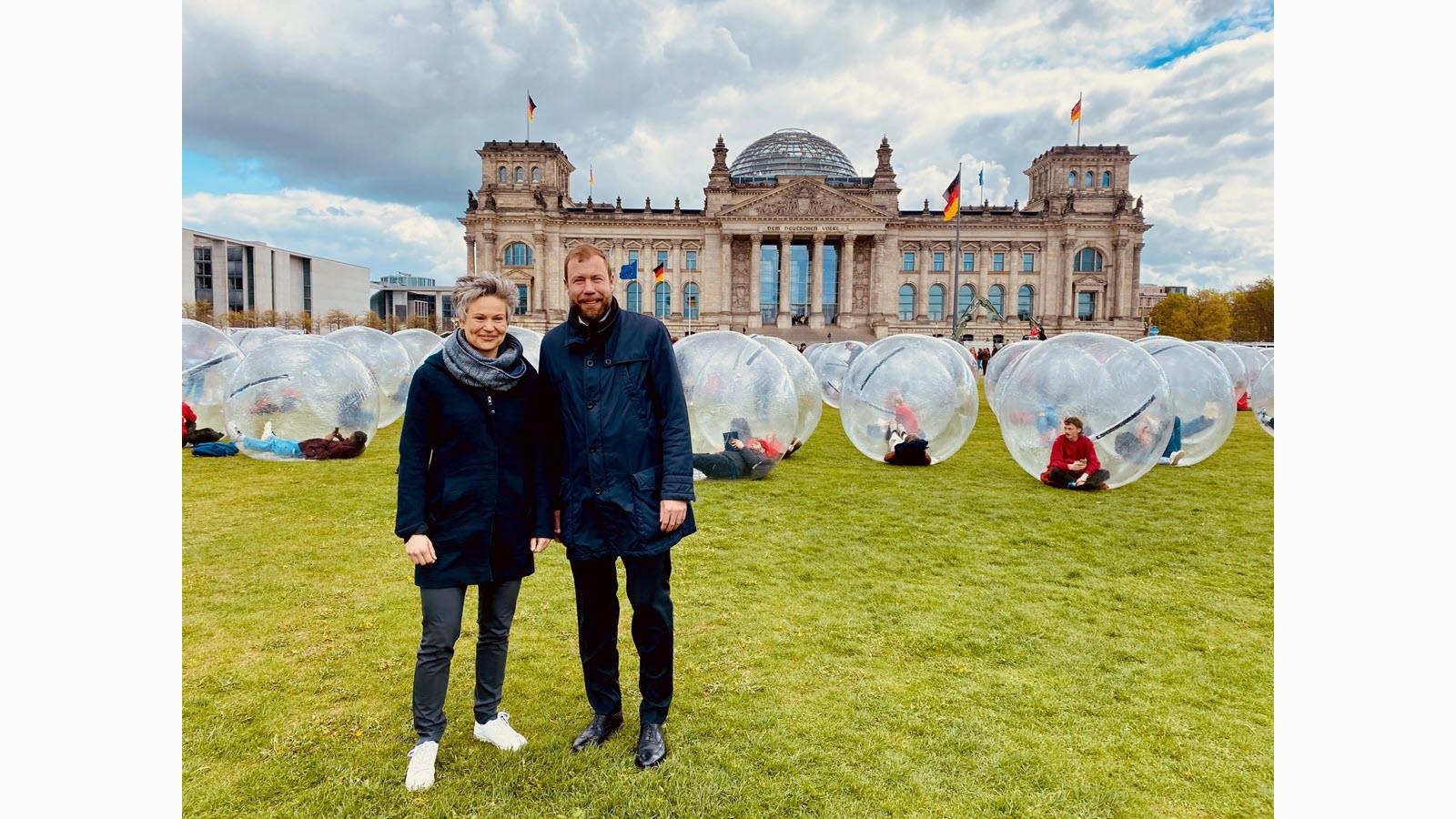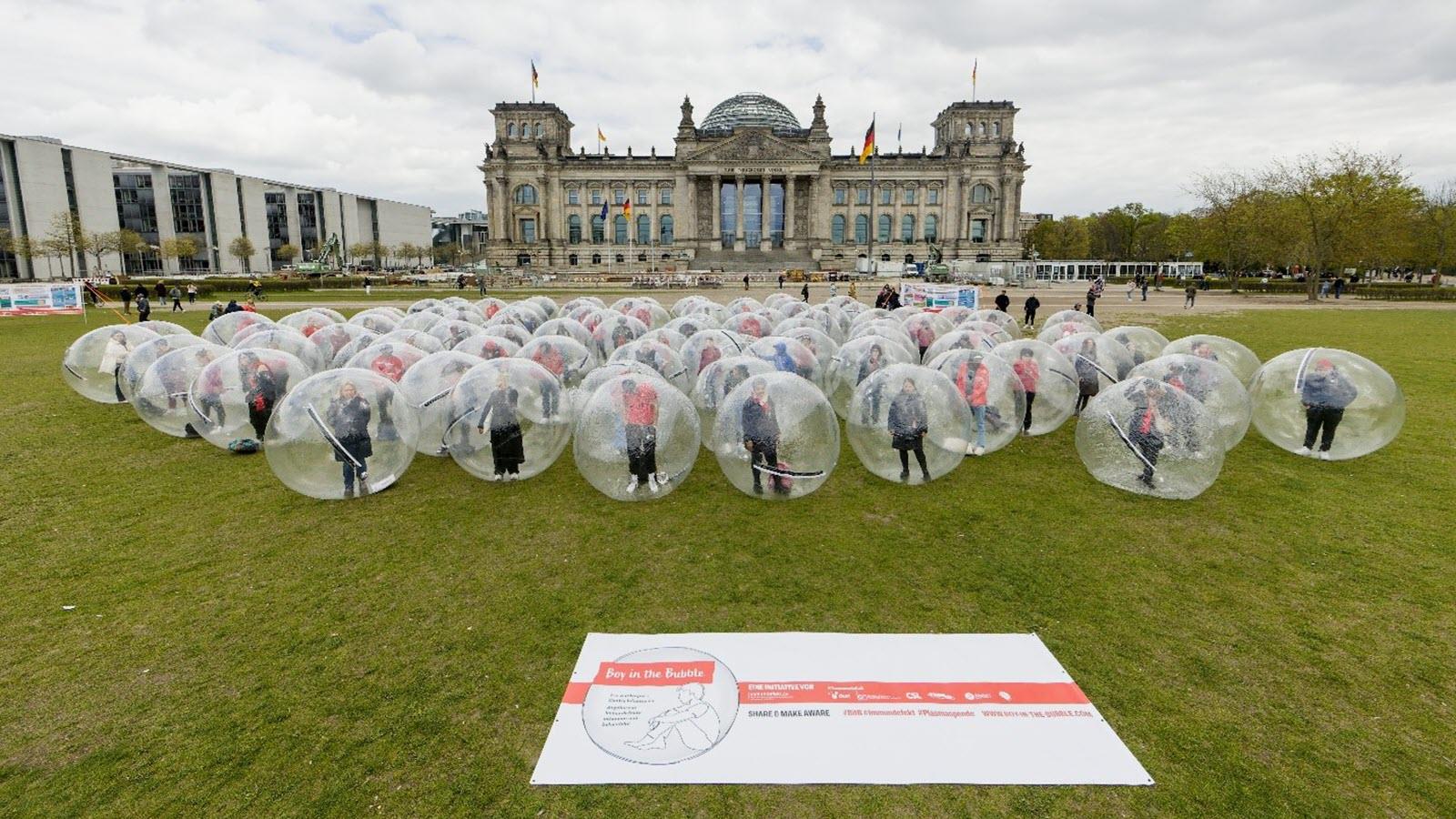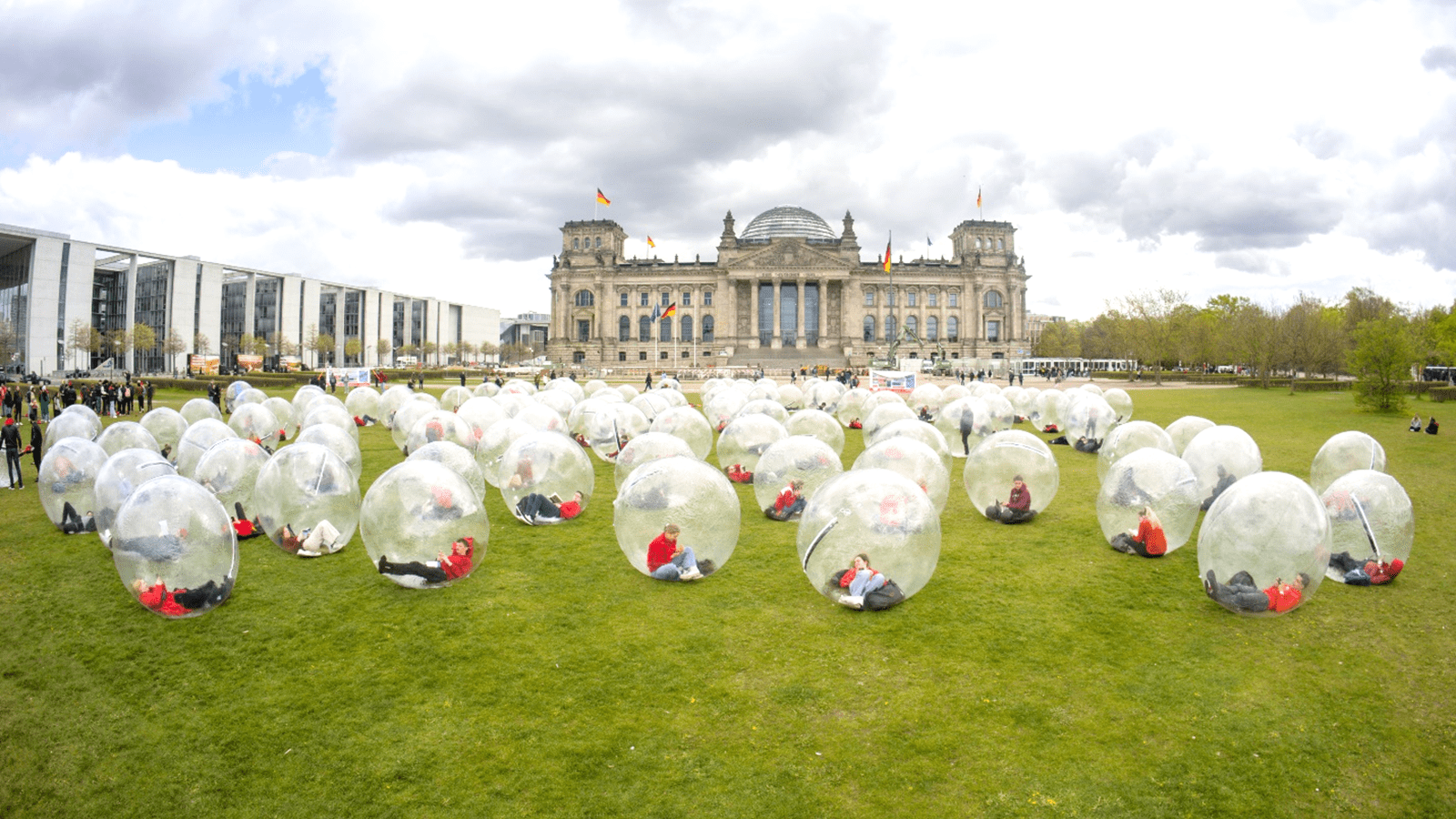During World PI Week, patient advocates in Berlin created a head-turning demonstration in front of the Reichstag building, the seat of German parliament. The message behind 100 large plastic bubbles – each occupied by a real person – was that without treatment, people who have primary immunodeficiency diseases would live lives of isolation.
That treatment – immunoglobulin – is derived from donated human plasma, which is in short supply globally, said organizers, including CSL Behring and CSL Plasma, which make plasma-based medicines for serious and rare conditions. CSL Behring, a business unit of CSL, has a large manufacturing and R&D facility in Marburg, Germany.
Other participants included the German patient organization (dsai), the German Pharmaceutical Industry Association (BPI), immundefekt.de and the physician network FindID.
In an April 26 press conference, officials with CSL Behring and CSL Plasma joined with Prof. Dr. Volker Wahn and other officials to raise awareness about PI patients and the special nature of blood plasma therapies. Someone with a primary immunodeficiency was born with an immune system that is faulty or incomplete, making them vulnerable to serious infections. There are more than 450 different forms of PI, complicating the diagnosis journey for patients.
"If the raw material plasma is not available in sufficient quantities, we will not be able to manufacture sufficient medicines," said Christian Wieszner, CSL Behring’s Vice President & General Manager for Germany, Austria and Emerging Europe. “And the gap between demand and supply will continue to widen, because the need for drugs containing immunoglobulins is increasing by eight percent a year, as the Paul Ehrlich Institute has found."

Immune deficiency patients have long debated the “boy in the bubble” identity, which was popularized by a 1976 movie on U.S. television starring John Travolta. On the one hand, it was a quick and simple way to dramatize the risks faced by people born with severe combined immunodeficiency (SCID), which is fatal unless caught quickly and treated. But the TV movie version – and other depictions – also were criticized for being inaccurate and insensitive.
David Vetter, who died in 1984 at age 12 due to SCID, was the real-life inspiration for such dramatizations. He lived his life at a Texas children’s hospital in protected environments, one of which was “the bubble.” Vetter needed an exact match bone marrow transplant but none of his family members were a match.
“We trusted our doctors. We were grateful for the bubble; the bubble was the only treatment option available for David at the time,” his mother, Carol Ann Demaret, said in an article on the Immune Deficiency Foundation website.




